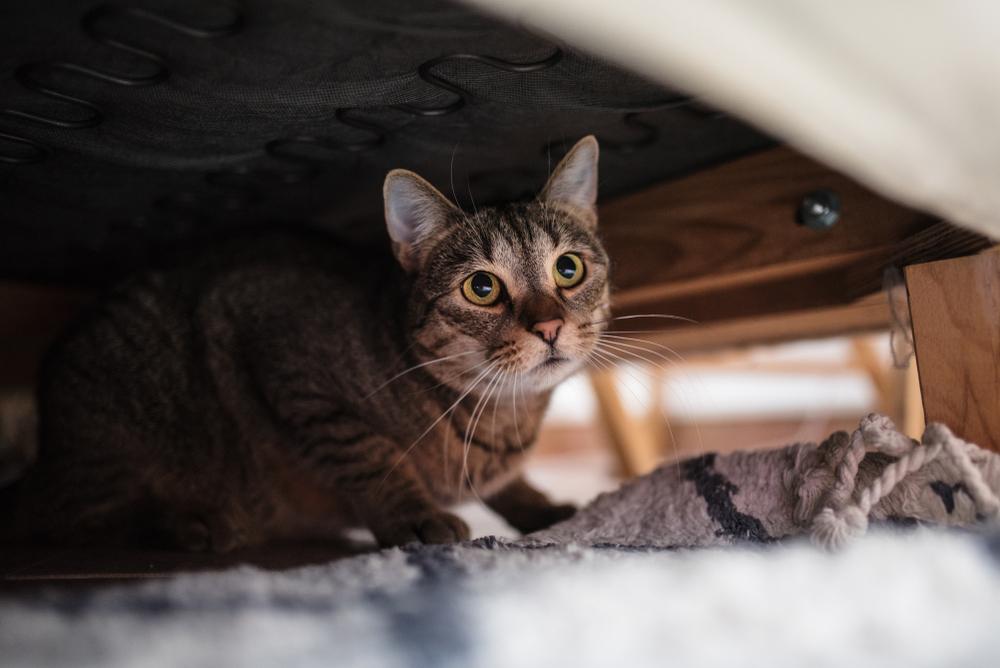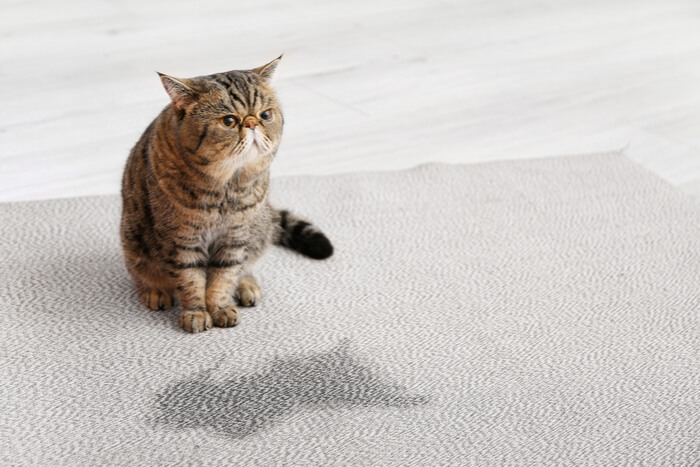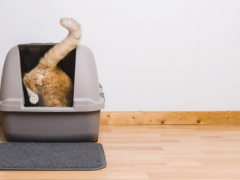
Just as traumatic experiences can have long-lasting effects on people, cats can be impacted in a similar way. If they experience one or more incidents where they were under threat or in harm’s way, cats might suffer from fear, stress, and anxiety that can affect their daily life.
Key Takeaways
Signs of trauma in a cat include changes in their temperament, interactions, activity, and toileting.
Support for a traumatized cat is based on environmental management and behavioral modification.
The goal is to manage the cat's stress and anxiety, and improve their overall well-being.
Can Cats Have Ptsd?
While some cats can experience distressing events leading to behavioral problems, they do not exhibit post-traumatic stress disorder (PTSD) in the same way humans do, as PTSD is a complex psychological disorder tied to human cognition and memory processing. However, cats may develop similar symptoms such as avoidance behavior or aggression following traumatic experiences.
By recognizing the signs of trauma in cats, you can help manage the situation so that these negative emotions can be minimized.
Common Signs of a Traumatized Cat
1. Aggression
When a cat has experienced a traumatic event, this can make them more prone to displaying aggressive behavior. When cats feel threatened, their “fight or flight” response is activated. If they are unable to escape due to being restrained, cornered, or too close to the supposed danger, they will resort to aggression in order to protect themselves.
Traumatized cats will also have a certain level of background stress that can lead to a heightened state of arousal. This can result in exaggerated responses disproportionate to the threat that is present. For example, you might approach to stroke them on the head and this could be enough to cause the cat to lash out at you.
2. Increased Affection
Though some cats will use aggression as a defense mechanism, other cats that are going through emotional stress might go the opposite way. You might notice your cat becoming clingier and more affectionate after experiencing something distressing. They might seek out your company and find it difficult to be alone. This needy behavior is their way of finding some reassurance from you in order to feel more secure.
3. Spending Lots of Time Hiding Away

Hiding is also tied to a cat’s “fight or flight” response—being hidden away makes them feel safer.
A fearful and anxious cat is likely to spend lots of time hiding away as it makes them feel safer and more secure. The urge to flee and hide is part of their “flight” response to keep themselves from harm’s way.
Hiding is normal cat behavior but it is worrying when it becomes excessive. If your cat spends most of the day in their hiding place and doesn’t respond to being coaxed out gently, they are likely going through a lot of emotional distress.
4. Hypervigilance
As mentioned earlier, emotional stress can lead to a heightened state of arousal in your cat. In addition to producing exaggerated aggressive responses, they can become increasingly vigilant about their surroundings so as to avoid any potential threats.
They constantly scan the environment for danger, attuned to detecting small movements and noises, and looking for escape routes. When cats are very alert and on edge like this, you might also notice them becoming easily startled and spooked.
5. Reduced Interaction With People and Other Pets
A cat that has experienced emotional trauma is likely to become more withdrawn and less willing to interact with people or other pets in the family. Trying to engage them in playtime might yield little result.
6. Altered Sleeping Pattern

Traumatized cats might exist at such a high level of alertness they cannot settle down to sleep like normal.
Sleep disturbances can be seen in cats that are suffering from high levels of stress and anxiety. They are in a state of restlessness and agitation. As a result, they cannot relax enough to settle down. You might also find them pacing back and forth at night time.
7. Increased Vocalization
Excessive meowing is a behavior that cats can show when they are feeling stressed. Meowing is mostly thought to be a vocalization that is directed toward people. If your cat has become noisier, then it can be a sign that they are trying to communicate their distress to you.
8. Loss of Appetite and Weight Loss
A traumatized cat might be less inclined to eat. If this persists, they will lose weight and suffer from poor body condition. It is important that cats do not go for too long without eating as a few days of anorexia (little or no appetite) can lead to hepatic lipidosis (fatty liver disease), which can be fatal if untreated.
9. Inappropriate Toileting

If your cat has always used their box regularly, but begins having accidents, it could be due to stress or a medical problem.
Cats are known for being very clean animals. If you notice your cat constantly urinating or defecating inappropriately outside their litter box, then it’s time to consider if they are undergoing some sort of stress. It’s important to note that cats never toilet in inappropriate areas in the house out of “spite,” but it can be caused by medical problems as well as behavioral issues.
How To Help a Traumatized Cat
1. Bring Them to Your Veterinarian for a Health Check
The signs of a traumatized cat that is experiencing fear, stress, and anxiety are similar to the signs shown when a cat is ill. If you have noticed the outlined signs discussed above in your cat, schedule them for a health check with your veterinarian.
It is important to rule out underlying health issues. Once this has been done and the problem does indeed seem to be behavioral, your veterinarian can provide advice on how to best support your cat. They might recommend a behaviorist who can work closely with you to come up with a behavioral medication plan.
2. Provide Plenty of Quiet Hiding Places
If your cat is hiding away a lot, don’t be tempted to force them out as this can increase their stress levels. Instead, make sure there are plenty of suitable safe spaces that are easily accessible for them in the house. It is a good idea to have adequate vertical space. Being high up often makes cats feel more secure and allows them to survey their environment more easily.
3. Stick To Their Routine as Much as Possible
Cats are creatures of habit and prefer to stick to the same routine each day. Small changes to their routine can be enough to unsettle them. If your cat is showing signs of trauma, then it’s best to try and minimize the stress that they are feeling.
4. Counterconditioning and Desensitization
Counterconditioning and desensitization are behavioral modification techniques that are often used in combination. Desensitization involves gradually increasing a cat’s exposure to a certain stressor so they learn there are no scary or negative effects and can become less fearful.
Counterconditioning aims to replace a fearful response with a positive one instead. These take great time and patience. It is best carried out under the guidance of a behaviorist, as signs can worsen if it is not carried out properly.
5. Pheromone Therapy
Pheromone therapy, like Feliway, can help reduce stress and anxiety in cats. Pheromones come in a diffuser form that can be plugged in around the house. They can also be purchased as a spray and be used on different surfaces, such as blankets and cat trees.
6. Behavioral Medication

In severe cases, your veterinarian or animal behaviorist might recommend prescription medications to help with your cat’s anxiety.
Behavioral medication is not usually reached for straight away. But for cases where environmental management and behavioral modification alone aren’t enough, a veterinarian might choose to prescribe medication to facilitate these efforts.
Drugs that are used for managing stress and anxiety include fluoxetine, clomipramine, and amitryptiline. It can take a few weeks to see an effect with these. If you are wondering whether your cat might be a suitable candidate for medication, consult your veterinarian who can advise on your situation.
Final Thoughts
A cat that is traumatized will show changes in their temperament, interactions, activity, and daily routine. Looking out for these signs will allow you to detect any problems earlier on so that a management plan can be put in place to help alleviate the fear, stress, and, anxiety that they are feeling. Supporting a traumatized cat takes time, care, and patience. But with this dedication, you can hope to improve their overall well-being.
Also Read:Â How To Make Your Cat Love You Even More [8 Ways]
Frequently Asked Questions
Is my cat suffering from PTSD?
If your cat is suffering from post-traumatic stress disorder, they will show various behavioral changes. These include increased aggression, hypervigilance, reduced interaction with the family, and a tendency to hide.
Their sleeping pattern might be affected and they might pace back and forth while meowing excessively. They might lose their appetite and show inappropriate toileting behaviors.
Can a traumatized cat be treated?
Yes, a traumatized can be treated. They might never be completely "fixed," but things can be done to help manage their fear, stress, and anxiety. This is usually based on environmental and behavioral modification. Using calming aids alongside, like pheromone therapy, can be beneficial. Some cats will need behavioral medication prescribed by a veterinarian.
How long does it take for a cat to get over a trauma?
How long it takes to process emotional trauma depends on each individual cat. Supporting a traumatized cat takes time, care, and patience. It cannot be rushed and must be done so in a way that does not overwhelm them and stall progress. If you are concerned about how your cat is coping, reach out to your veterinarian for advice.
-
Atkinson, T. (2018). Practical Feline Behaviour. Oxfordshire, UK: CAB International







